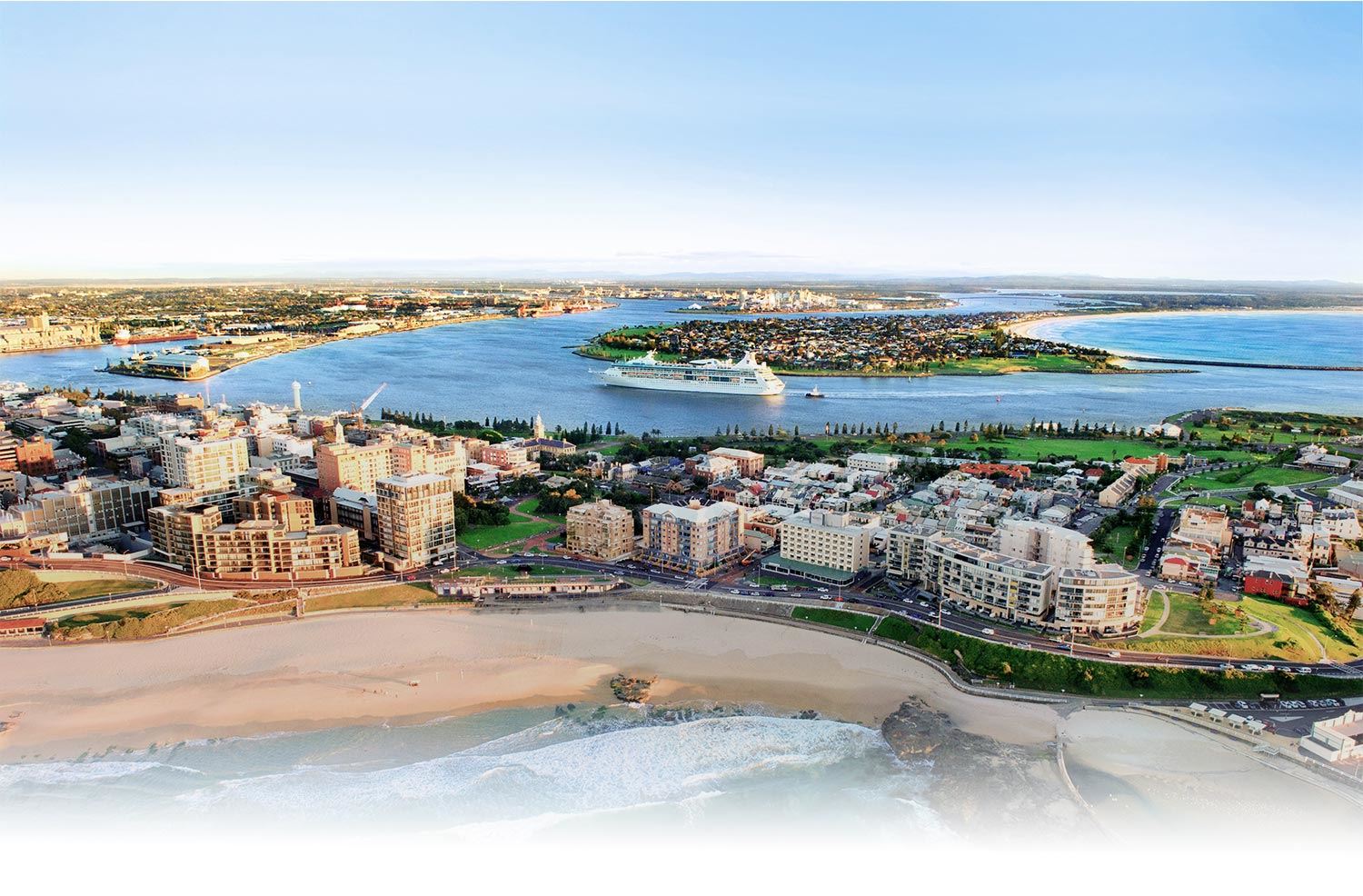
Options to Support Mass Sand Nourishment
Work is underway to identify additional coastal management options to extend the life of mass sand nourishment that has been committed in the Stockton Coastal Management Program 2020.
We have considered a long list of potential management options. With community feedback on the options (PDF 227KB) together with consideration of the Coastal Management Act 2016, a shortlist of four options will now be further investigated. CN will consider the feasibility of each scheme to ensure it is possible along with developing a cost-benefit analysis.
The four schemes are:

Maintenance Nourishment
The aim is to actively get the sand moving by mimicking natural sand flow, something that has stopped at Stockton.
This option involves artificially replacing the sand that currently moves north from Stockton Beach. Currently, around 112,000 cubic metres (net) is lost off the beach north along Stockton Bight each year. The benefit of this approach is that it allows the northward movement of sand to provide a buffer for the coastline north of Meredith Street.
For this to go ahead, we still need to identify a source of sand and identify long-term environmental impacts of retrieving and depositing maintenance sand on a regular basis.
Artificial Headland
The aim of this scheme is to keep sand in the system as the headland will slow the northern movement of sand along Stockton Bight. As part of this management option, sand will build up on the southern side of the headland. Once it has built up sand will bypass the headland and then feed the beach to the north.
It’s proposed that the headland will be placed near Fort Wallace (Defence Housing Australia land) and the headland will extend into the ocean by around 150 to 200 metres.
For this to go ahead, we still need to confirm exactly how the headland will work. Specific modelling will determine sand volumes held by the structure and sand volumes by passing the structure.
Artificial Reef
An artificial reef would slow the northward movement of sand along Stockton Bight by reducing wave energy reaching the beach. The reef will be submerged, and sand will build up on the southern side of the reef. Once construction is complete the shoreline to the north of the structure will realign. The reef would be placed near Fort Wallace (Defence Housing Australia land).
For this to go ahead, we need to find out if we have the ability/need to build more than one reef and learn exactly how it would work. Like the headland, specific modelling will determine sand volumes held by the structure and sand volumes by passing the structure.
Sand Back Passing
This scheme aims to keep sand in the system by re-circulating the northward movement of sand to the south, following mass sand nourishment. Sand will be re-circulated using machinery that will dredge sand and feed it via pipe network south to outlets placed along Stockton Beach.
The back-passing system, which will be powered by a pump station, will allow wet sand to flow from the outlets onto Stockton Beach. The pumping rate will allow for the water to run into the ocean leaving the sand to fall out, building the beach. During operation small sections of the beach will be closed to the public, however the majority of the beach will be open.
For this to go ahead, we still need to determine the exact location for specific infrastructure and run modelling around the volumes of sand that will be used. Operational frequency and times for sand back passing are also still to be determined.













